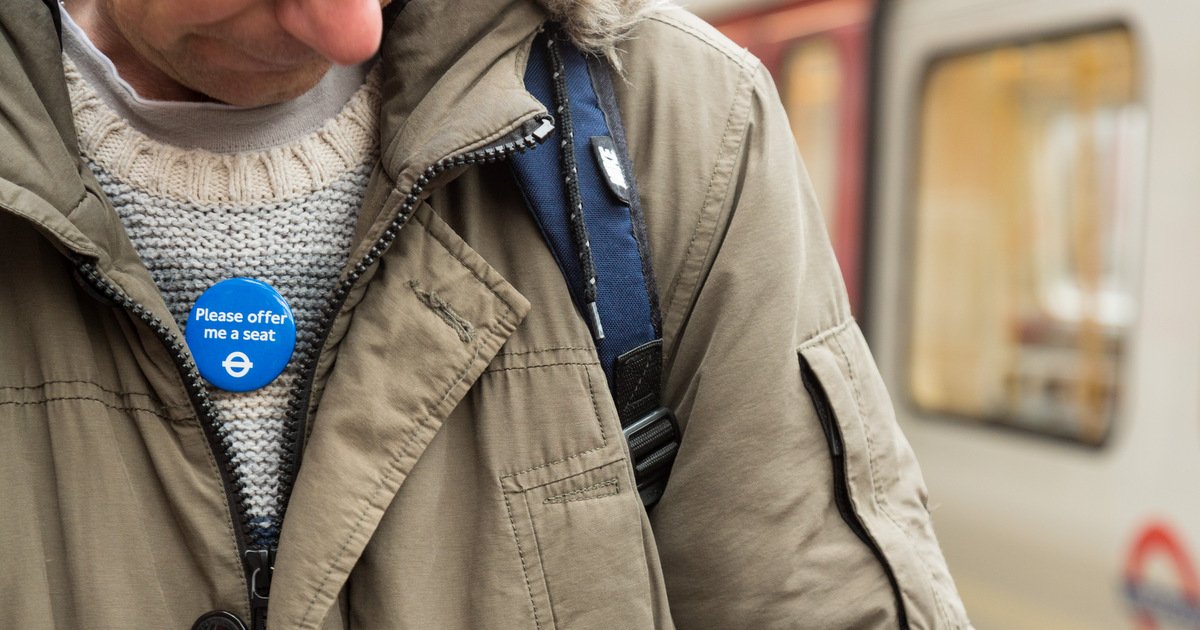“Please offer me a seat”
To give up seats on the subway based on the narrowly defined category of ‘older and disabled riders’ has lead commuters to overlook people who may require a seat but are not fitted in said category. Thus, the absence of this simple courtesy act has become a magnifying problem present in the city of New York.
Jamie Tzioumis, an active commuter, is pregnant with seven-month old twins. Her experiences of commuting while pregnant were not easy. Though she is visibly pregnant, other commuters do not see her as one who requires a seat as opposed to the narrow category of “old and disabled” passengers commuters are taught to give up their seats for. Thus, this leads Jamie to wearing tags that say “BABY ON BOARD!” in hope of finding empty seats on the subway. Soon after, as this issue was addressed to the board, according to CBS New York, the Metropolitan Transportation Authority (MTA) agreed to make a change, thereby designing and manufacturing button pins that say “Please offer me a seat.” to be distributed to the public in hopes to raise awareness for the average commuting class to give up seats for pregnant, elderly, and disabled passengers (Croffie 2017). Nonetheless, the actual value of these buttons, that is its effectiveness, is still in question as its use is still to be evaluated.
Despite the efforts of the transit authorities taking a creative approach in attempt to mitigate this issue, as the commuters are considered their customer segments and relations, button pins are not always visible in which hinders the effectiveness of the entire project.
Additionally, pregnancy seating is not the only problem. When speaking of “disabled” passengers, often times people only regard the visible symptoms and do not take into account of the unseen symptoms triggered by different and non-obvious exposures.
While NYC subway stations occasionally announce the next destination as reminders to commuters, the announcement aspect can be used to an advantage in actively communicating additional information like reminders to yield seats to pregnant women, elderly, disabled, and people with ‘invisible disabilities’. Another way of making the public aware is through visual advertisements with embedded messages or small visible reminders on the subway and or other transit vehicles that further emphasizes the importance of remaining vigilant and considerate of others. Due to the numerous ‘invisible disabilities’ (Wang 2017) that differ from pregnancy, MTA taking other routes such as public announcements, thoughtful advertisements, and placing reminders on transit vehicles can be more effective in imprinting a message to the general public as a transit company as opposed to small buttons pleading for seats.
Word Count: 434
COMM 101,102 Blog Post 2
Work Cited:
Croffie, K. (2017, May 14). Baby on Board badge not just for cars in NY. Retrieved September 23, 2017, from http://www.cnn.com/2017/05/14/us/new-york-subway-pregnant-women-trnd/index.html
MTA Press Releases. (n.d.). Retrieved September 23, 2017, from http://www.mta.info/press-release/mta-headquarters/mta-launches-new-awareness-campaign-encourage-customers-offer
New MTA Button Campaign Urges Riders To Give Up Seats For Those Who Need Them. (n.d.). Retrieved September 23, 2017, from http://newyork.cbslocal.com/2017/05/14/mta-seat-button-campaign/
TfL’s ‘Please offer me a seat’ badge now permanently available. (2017, April 28). Retrieved September 23, 2017, from https://www.leonardcheshire.org/support-and-information/latest-news/news-and-blogs/tfls-please-offer-me-seat-badge-now-permanently
Wang, V. (2017, September 22). ‘Please Offer Me a Seat,’ the Buttons Say. Subway Riders Aren’t Listening. Retrieved September 23, 2017, from https://www.nytimes.com/2017/09/22/nyregion/please-offer-me-a-seat-the-buttons-say-subway-riders-arent-listening.html
